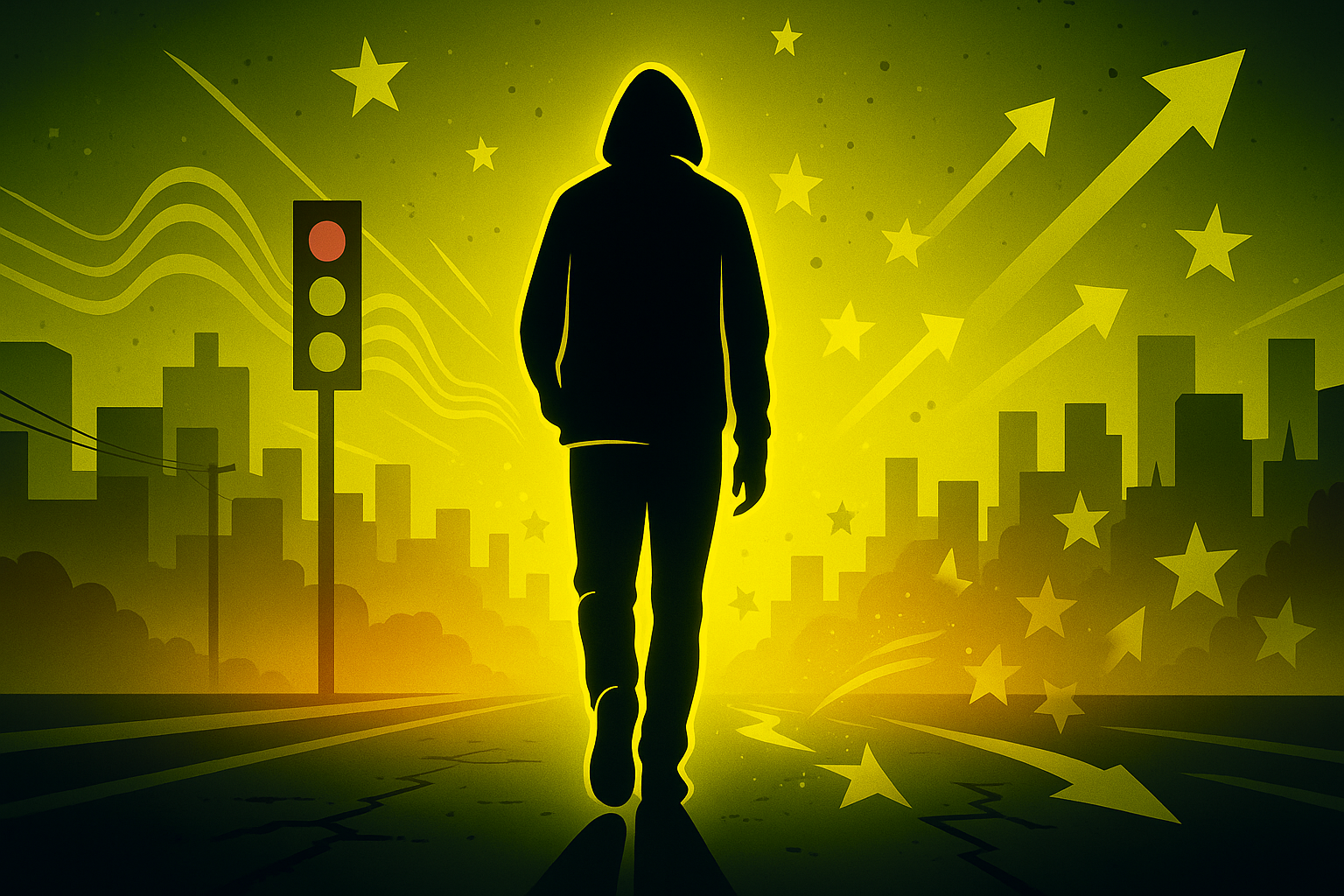Every sound tells a story — even when the words are simple.
When I first heard “It’s Too Late,” I knew it wasn’t just a song. It was a mood.
So I set out to build a story with pictures — one that could breathe between the beats.
Scene 1 — The Call
A lone figure under a streetlight, hoodie up, phone glowing.
The world around them hums in pink and blue neon — alive, but empty.
The arrows and notes drifting through the air aren’t just visuals; they’re echoes of thought.
It’s that moment before the first ring, before you decide if you’re picking up or walking away.
Scene 2 — The Walk
The call ends, or maybe it never started.
The phone hits the ground, glow fading fast.
The yellow-green lights stretch long across cracked pavement, turning warmth into distance.
This is the sound of footsteps where words should’ve been.
Scene 3 — The Look Back
Two silhouettes, one near, one far.
Traffic lights pulse red and green like a heartbeat — forward or stop, go or stay.
Between them: nothing but smoke and color.
It’s not anger. It’s gravity.
That moment when you realize you’re both still standing there, but not for the same reasons.
Scene 4 — The Horizon
The hooded figure keeps walking.
The skyline melts into soundwaves and stars, the music swallowing the street.
Yellow-green light fills everything — acceptance, not defeat.
There’s no turning back. The song ends where the story began: with motion.
The Vibe
Each frame sticks to the early-2000s vector silhouette style — the Just Dance, MTV2 energy — but filtered through something quieter, more human.
Color becomes emotion: pink for pulse, green for distance, yellow for peace.
Every scene was built to move with the beat, not chase it.
This project wasn’t about making a music video — it was about giving silence a rhythm.


Leave a Reply